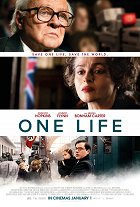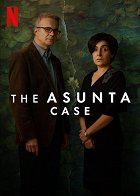Biography - Genres
Hottest on VOD Today
Characteristic features of biographical films
The term “biographical film”, or "biopic", refers to a film whose plot consists of a dramatization of the life of a real important person, whether living or deceased, or of several such persons at the same time. Unlike biographical documentaries, which are based on authentic footage and testimonies, biopics are based on fictional narratives (even if based on real events), in which actors play the roles of the personalities in question. Biopics are therefore classified as a fictional genre, and are most often realised in the form of biographical dramas and biographical historical dramas, but depending on the chosen theme, they can of course also fulfil aspects of other genres, such as comedies, westerns, musicals, or war or crime films. Within these genres, biopics stand out for their focus on specific people from ancient or recent history and their actions, albeit often with an overlap into broader political and social events. Their aim is either to cover someone's entire life story, or at least the part of it that can be considered the most significant in terms of historical value. Their subjects are most often the lives of presidents, rulers and politicians, singers, painters, writers, composers and other artists, scientists and inventors, military commanders, national heroes and criminals, famous athletes and other well-known personalities or celebrities. Biopics also include many films inspired by the lives of biblical figures, whose real existence and historical credibility are, however, in many cases disputed.
However, even other biopics may not be fully faithful to reality, and therefore they often colour, simplify and distort the fate of their characters, making them more dramatic or interesting than they really were. Their stories often adhere to established narrative conventions, within which, for example, films about royal rulers usually revolve around their politics in the context of the country, the historical period and the behind-the-scenes intrigues of the royal courts; films about warlords, for example, deal with their victories and strategies in certain battles and wars; and films about the life of Jesus Christ usually deal with his trial and crucifixion. In films about artists, it is common for the protagonist to risk everything in the pursuit of success, face personal conflicts and problems on the way to the top, and then eventually experience a crisis accompanied by a decline in fame and culminating in a triumphant return. Films about famous women often deal with their ability to make it in challenging competition and in an environment full of stereotypes, prejudice and inequality.
Casting often plays an important role in the making of biopics, where actors and actresses are chosen based, among other things, on their physical resemblance to the characters they are to portray in the film, which can then be enhanced by skilful make-up. In their acting, they usually try to imitate not only their speech and facial expressions, but also the movements and gestures of their real-life predecessors, and due to the demanding nature of such roles, they are often nominated for film awards for their performances and are also duly appreciated, just like the biopics themselves.
Biopics from the beginning of the silent era to the late 1920s
Biopics were sporadically made in the early days of cinema, as evidenced by Joan of Arc (1900), a short by French filmmaker Georges Méliès, or the Australian crime drama The Story of the Kelly Gang (1906), about a gang of robbers led by Ned Kelly. Joan of Arc was also the subject Cecil B. DeMille's Joan the Woman (1916), as well as the later French drama The Passion of Joan of Arc by Carl Theodor Dreyer (1928). The French film Queen Elisabeth (1912) depicted the reign of Queen Elizabeth I, while the British film Sixty Years a Queen (1913) focused on the reign of Queen Victoria. The lives of Edgar Allan Poe (The Raven, 1915), Abraham Lincoln (The Lincoln Cycle, 1917) and Grigori Rasputin (Rasputin, the Black Monk, 1917), among others, also became subjects for filmmakers.
In the 1920s, the French co-production Napoleon (1927), a four-hour film, and also several films about the life of Jesus Christ, such as the German Crown of Thorns (1923) and the American The King of Kings (1927), made their mark among biopics. The films If I Were King (1920) and The Beloved Rogue (1927) dealt with the life of the poet François Villon, while the western Jesse James (1927) described the fate of the famous outlaw. President Lincoln's life was reinterpreted in The Dramatic Life of Abraham Lincoln in 1924 and later in Abraham Lincoln in 1930. The French film Casanova (1927), brought to life the story of the famous writer and seducer. The biopic subsequently established itself as a genre in its own right in the late 1920s and early 1930s, beginning with Disraeli (1929), which dealt with the British politician and writer Benjamin Disraeli, who had already been the subject of several films in 1916 and 1921.
The Passion of Joan of Arc (1928)
Photo © Gaumont
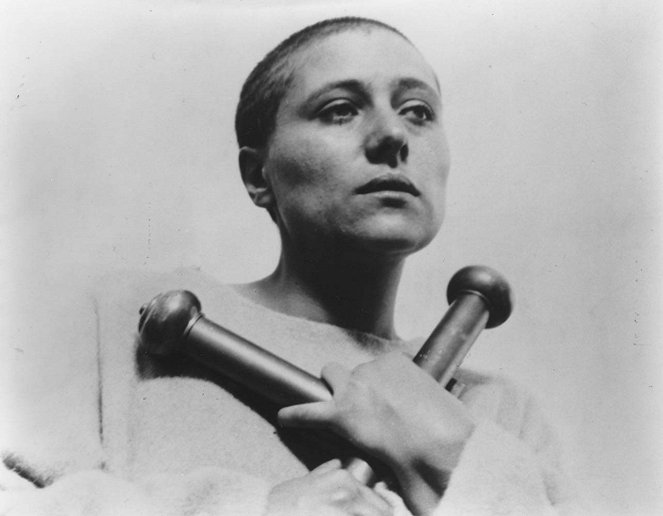
The rise of biopics in the 1930s
The 1930s saw a great wave of popularity for biopics, with the German-born American director William Dieterle in particular helping to shape their codified form. His most successful films include The Story of Louis Pasteur (1936), the three Oscar-winning story of the French scientist, The Life of Emile Zola (1937), also a three Oscar-winning drama about the famous writer, and Juarez (1939), a film based on the life of Mexican President Benito Pablo Juarez. After the success of the British historical film The Private Life of Henry VIII (1933), other filmmakers began to focus on the characters of monarchs, leading to films such as Queen Christina (1933), Cleopatra (1934), Mary of Scotland (1936), the four Oscar-nominated Marie Antoinette (1938), and the five Oscar-nominated The Private Life of Elizabeth and Essex (1939), which focused on the passionate affair between Elizabeth I and the English earl Robert Devereux. In the same year, two films about the Russian Tsarina Catherine the Great were made: the American The Scarlet Empress (1934) and the British The Rise of Catherine the Great (1934).
Rasputin the Mad Monk (1932) was not only about the mysterious mystic Rasputin, but also about the last Russian Tsar Nicholas II and other members of his family and court. The lives of famous artists were explored in the films Voltaire (1933) and Rembrandt (1936), the British drama Whom the Gods Love (1936), describing the story of Mozart and his wife, and the Soviet film Young Pushkin (1937), which examined the fate of Alexander Sergeyevich Pushkin. The biographical crime film Scarface (1932) was inspired by the feared gangster Al Capone, and Jesse James (1939) revived the story of the famous outlaw. The main hero of the musical The Great Ziegfeld (1936) was the Broadway artistic manager Florenz Ziegfeld, and in the drama The Story of Alexander Graham Bell (1939) it was the inventor of the telephone. The French film Behold the Man (1935) described the last days of Jesus Christ's life, while The Adventures of Marco Polo (1938) was dedicated to the famous explorer. Sergei Eisenstein's Soviet film Alexander Nevsky (1938) used the story of the national hero who defended Holy Russia from invaders to give courage in the face of an impending Nazi invasion. The same purpose - to encourage and play a patriotic note during the impending war conflicts - was subsequently served by a number of later biopics.
Alexander Nevsky (1938)
Photo © Mosfilm
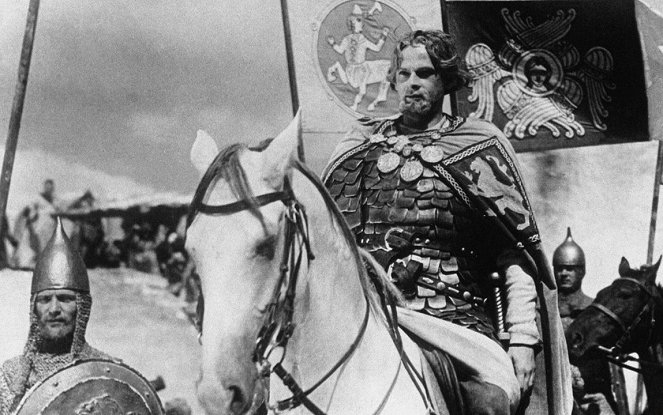
Biopics in the 1940s and World War II
The early 1940s, saw the production of strongly patriotic films, especially in Hollywood and the UK, for instance, Howard Hawks's two Oscar-winning Sergeant York (1941) was based on the real-life story of the most celebrated soldier of the First World War. There were also patriotic films about the lives of American presidents, such as Young Mr. Lincoln (1939), Abe Lincoln in Illinois (1940) and the five Oscar-winning Wilson (1944), about the life of Woodrow Wilson. In order to boost morale in the UK, Laurence Olivier directed Henry V (1944), a based on William Shakespeare’s namesake play about the famous English king, at a time when Britain was preparing to invade German-occupied France. In the Soviet Union, Sergei Eisenstein's two-part Ivan the Terrible (1945) had a similar effect, telling the story of Russian Tsar Ivan IV as a national hero, while Germany produced, among others, Bismarck (1940) and The Dismissal (1942), dedicated to the politician Otto von Bismarck.
There were a number of films about great inventors, Thomas Edison, for example, was the subject of a pair of films: Young Tom Edison (1940) and Edison, the Man (1940), and the scientific work of Marie Curie and her husband, discoverers of the radioactive element radium, was the subject of Mervyn LeRoy's Madame Curie (1943), which received seven Oscar nominations. Other personalities whose lives became a subject for filmmakers include baseball player Lou Gehrig (The Pride of the Yankees, 1942), boxer James Corbett (Gentleman Jim, 1942), composer and cabaret artist George M. Cohan (Yankee Doodle Dandy, 1942), writer Mark Twain (The Adventures of Mark Twain, 1944), gangster John Dillinger (Dillinger, 1945), composer George Gershwin (Rhapsody in Blue, 1945), composer Frédéric Chopin (A Song to Remember, 1945), the Brontë sisters (Devotion, 1946), composer Cole Porter (Night and Day, 1946) and explorer Christopher Columbus (Christopher Columbus, 1949). Henry King's drama The Song of Bernadette (1943) took in four of its twelve Oscar nominations with its story about a French peasant woman who witnessed an apparition of the Virgin Mary, and two of its seven nominations went to Victor Fleming's historical film Joan of Arc (1948), which dealt with the Hundred Years' War and the story of Joan of Arc.
Citizen Kane (1941), directed by Orson Welles, enriched the biopic genre with a number of innovative filmmaking and storytelling techniques, and although it turned in only one of its nine Oscar nominations and was not much appreciated by audiences at the time, it has now become a much-praised legend, often featured in lists of the best American films of all time. The titular character is a fictional millionaire and media mogul whose unacknowledged inspiration in the person of real-life wealthy newspaper publisher and politician William Randolph Hearst became the subject of controversy at the time of the film's release.
Citizen Kane (1941)
Photo © RKO Radio Pictures
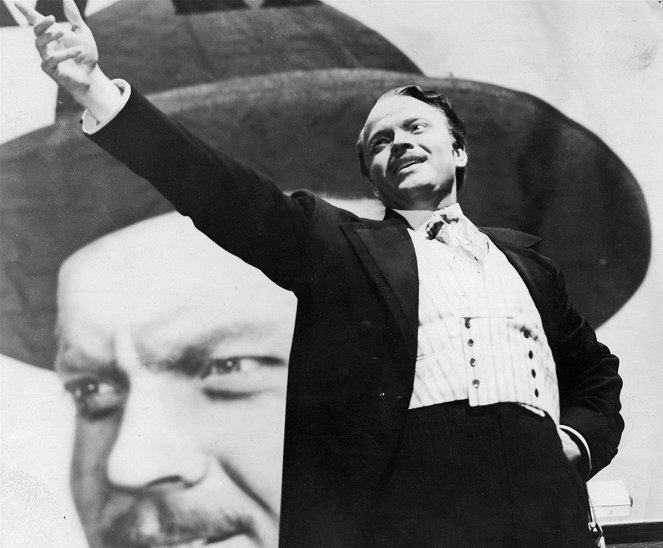
Historical films and other biopics in the 1950s and 1960s
The first half of the 1950s saw the production of several historical biographical dramas, which foreshadowed the wave of major historical films made in the following years. Julius Caesar (1950) and Julius Caesar (1953) were based on Shakespeare's historical play, and the Persian campaign of the King of Macedonia was the subject of Alexander the Great (1956). The turn of the decade and the 1960s were particularly fertile for Hollywood historical films, with, for example, David Lean's Lawrence of Arabia (1962), which won seven Oscars for the story of British officer Thomas Edward Lawrence, who managed to unite the Arab tribes against the Turks during the First World War. Even more spectacular was Joseph L. Mankiewicz's three-Oscar-winning epic Cleopatra (1963), at the time the most expensive major motion picture ever. The biblical films King of Kings by Nicholas Ray (1961) and The Greatest Story Ever Told by George Stevens (1965), which was nominated for five Academy Awards, revived the story of Jesus Christ. Other films were dedicated to famous warlords, for example Napoleon (1955) and The Battle of Austerlitz (1960) were made in France shortly after each other, and Genghis Khan (1965) was made in Great Britain.
Viva Zapata! (1952), based on the Mexican revolutionary Emiliano Zapata, was nominated for five Oscars, Lust for Life (1956), a film about the life of Dutch painter Vincent van Gogh, took in one of its four Oscars nominations, and Funny Girl (1968), a biopic musical about comedienne Fanny Brice, won one of the eight Oscars. Director Anthony Mann first ventured into biopics with The Glenn Miller Story (1954), which drew on the life of the famous musician, and later his historical masterpiece Cid (1961), named after the knight and Spanish national hero who united Spain against the Arabs in the second half of the 11th century, was nominated for four Oscars. Machine-Gun Kelly (1958) depicted the fate of criminal George Kelly, while Al Capone (1959) shone a spotlight on the most notorious Depression-era gangster.
The six Oscar-nominated Hans Christian Andersen (1952) traced the life of the famous Danish writer, the drama Houdini (1953) drew on the life of illusionist Harry Houdini, and Billy Wilder's adventure film The Spirit of St. Louis (1957) was a reconstruction of Charles Lindbergh's pioneering flight from New York to Paris in 1927. The three Oscar-winning The Diary of Anne Frank (1959) was an adaptation of the kept by a Jewish girl while she was forced into hiding from the Nazis. The character of Joan of Arc was the subject of the French film The Trial of Joan of Arc (1962) by Robert Bresson. Sunrise at Campobello (1960) was nominated for four Academy Awards, telling the story of future US President Franklin Roosevelt's struggle with polio, which subsequently forced him to use a wheelchair at times. Two Oscars went to Arthur Penn's The Miracle Worker (1962), which revolved around the character of Helen Keller, a writer who lost her hearing and sight as a child, but was able to learn to speak as an adult thanks to her dedicated tutor after many years of training.
Films dedicated to the personalities of various royal families were also numerous. For example, the main heroine of the French film Queen Margot (1954) was Queen Margaret of Valois, in the American drama Anastasia (1956) it was Princess Anastasia Nikolaevna, daughter of the Russian Tsar Nicholas II, and the life of the Austro-Hungarian ruler Elisabeth of Austria was the subject of the Austrian trilogy consisting of Sissi (1955), Sissi: The Young Empress (1956) a Sissi: The Fateful Years of an Empress (1957). The film British Becket (1964), received twelve Oscar nominations with its story about the dispute between King Henry II of England and the Catholic Church, while the three Oscar-winning The Lion in Winter (1968) also revolved around Henry II. Six golden statuettes were awarded to A Man for All Seasons (1966), a drama about the life of politician Thomas More and his quarrels with Henry VIII over the establishment of the Church of England. The story of King Henry VIII of England and his marital intrigues were the subject of the ten Oscar-nominated costume drama Anne of the Thousand Days (1969).
Lawrence of Arabia (1962)
Photo © Columbia Pictures
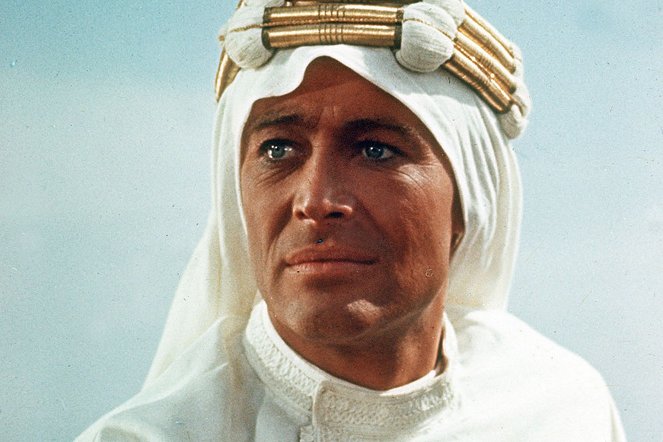
New Hollywood and the decline of biopics in the 1970s
The emergence of a new generation of filmmakers in Hollywood in the second half of the 1960s had an impact on the film production of the 1970s by, among other things, significantly reducing the number of new biopics. The arrival of new blood also meant an influx of fresh creative energy, discovering innovative stylistic solutions and experimenting with genres and the possibilities of the film medium, making traditional biopics out of fashion for a while. Still, there were a few lauded, distinctive, and appreciated exceptions, the most notable being director Franklin J. Schaffner’s biographical war film Patton (1970), about the fate of one of the greatest American leaders of World War II, which turned in seven of its ten Oscar nominations. A year later, Schaffner also succeeded with Nicholas and Alexandra (1971), which brought home two of his six Oscar nominations and chronicled the last fourteen years of the reign of Russian Tsar Nicholas II and his wife Alexandra Feodorovna, whose reign and lives were ended by execution during the Bolshevik Revolution, and his next film, Papillon (1973), was inspired by the story of French prisoner Henri Charriére.
Other New Hollywood directors who took to the biopic genre include John Milius, who in Dillinger (1973) charted the life of the feared gangster John Dillinger, Bob Fosse, whose portrait of the quirky entertainer Lenny Bruce, Lenny (1974), was nominated for four Academy Awards, and Hal Ashby, whose Bound for Glory (1976) won two Academy Awards for its story of folk singer Woody Guthrie, who sang about the state of the American nation during the Depression. The film about singer Billie Holiday, Lady Sings the Blues (1972), picked up five Oscar nominations, and three Oscars out of eleven nominations went to Fred Zinnemann's drama Julia (1977), based on the life of left-wing writer and playwright Lillian Hellman. MacArthur (1977), based on the story of the commander of American troops in the Philippines after the attack on Pearl Harbor, entered the war genre, while Capone (1975) was a crime drama about the career of Chicago mobster Al Capone. The musical Jesus Christ Superstar (1973) drew on the fate of Jesus Christ, which then received a more serious treatment in the film Jesus (1979).
The genre was a little more successful in the UK, where several notable biopics were made right at the beginning of the decade: a historical drama about the warlord Oliver Cromwell (Cromwell, 1970), and adaptation of Shakespeare’s play (Julius Caesar, 1970), a musical drama about the composer Pyotr Ilyich Tchaikovsky (The Music Lovers, 1971) and the five Oscar-nominated Mary, Queen of Scots (1971). They were followed by The Assassination of Trotsky (1972), about the murder of the Bolshevik revolutionary Leon Trotsky, Young Winston (1972), a drama about the early life of Winston Churchill, and Galileo (1975), a film about the famous astronomer Galileo Galilei. The life of Saint Francis of Assisi was the subject of the Italian-British film Brother Sun, Sister Moon (1972). Other films worth mention include the French co-production Ludwig: The Mad King of Bavaria (1973), the French-Italian Stavisky (1974), the Italian-American Fellini’s Casanova (1976) and Caligula (1979), and the French The Brontë Sisters (1979).
Patton (1970)
Photo © Twentieth Century-Fox Film Corporation
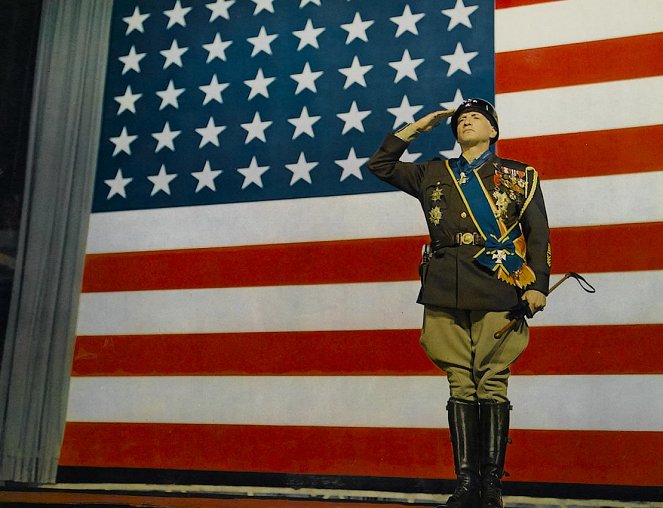
Biopics in the 1980s
The 1980s saw the production of several costly and lavish biopics that regularly competed with great pomp and success at the Oscars. Richard Attenborough's Gandhi (1982), a spectacular drama about the life of the Indian pacifist and political and spiritual leader who managed to liberate his country from British rule by non-violent means, won nine Oscars, Miloš Forman's Amadeus (1984), which revolved around the brilliant composer Wolfgang Amadeus Mozart and his jealous rival Antonio Salieri, won eight Oscars, and nine golden statuettes went to Bernardo Bertolucci's British co-production The Last Emperor (1987), the story of Puyi, the man who became the last emperor of China when he was just three years old, and also the first film whose makers were allowed to shoot in Beijing's Forbidden City, leading to greater openness in cultural relations between China and the Western world. Other directors that made biopics include David Lynch, whose The Elephant Man (1980), dealing with the troubled life of the disfigured John Merrick, received seven Oscar nominations; Francis Ford Coppola, whose Tucker: The Man and His Dream (1988) focused on the inventor Preston Tucker; and Kenneth Branagh, who, after his Henry V (1989), continued to find inspiration in the works of William Shakespeare.
Two Oscars out of nine nominations went to Martin Scorsese's Raging Bull (1980), dedicated to the character of boxer and middleweight champion Jake LaMotta, and Scorsese then impressed with The Last Temptation of Christ (1988), where he conceived the character of Jesus as a man doubting his destiny and his own power to live up to the demands placed on him. Another director whose name was often associated with biopic dramas in the decades that followed was Oliver Stone, whose Salvador (1986) charted the work of journalist Richard Boyle in documenting the civil war in El Salvador, while Born on the Fourth of July (1989), which turned in two of his eight Oscar nominations, was inspired by the story of Vietnam veteran Ronald Kovic. Two Oscars were also awarded to the Irish-British drama My Left Foot directed by Jim Sheridan (1989), based on the autobiographical book of the same name by Irish writer Christy Brown, who was born with cerebral palsy and was only able to communicate with the world using his left foot. Four Oscars went to the sports drama Chariots of Fire (1981), about the Olympic athletes Harold Abrahams and Eric Liddell, and three of the twelve nominations went to Reds (1981), about the story of journalist and communist activist John Reed.
Gorillas in the Mist: The Story of Dian Fossey (1988), which tells the story of an anthropologist who dedicated her life to saving mountain gorillas, was nominated for five Oscars, as was Silkwood (1983), a drama about the case of chemical technologist Karen Silkwood, who was a key figure in the safety of nuclear power plant workers. The film Mask (1985) was inspired by the story of Rocky Dennis, a disfigured boy suffering from a rare disorder of facial development. The musical drama Sid and Nancy (1986) explored the relationship between punk band Sex Pistols bassist Sid Vicious and his girlfriend Nancy Spungen, the short-lived reign of Britain's Queen Jane Grey was covered in Lady Jane (1986), and Barry Levinson's Good Morning, Vietnam (1987) looked at the Vietnam War from the perspective of popular Army radio host Adrian Cronauer. Other personalities who became the subject of filmmakers include singer Loretta Lynn (Coal Miner's Daughter, 1980), actress Frances Farmer (Frances, 1982), serial killer Henry Lee Lucas (Henry: Portrait of a Serial Killer, 1986), singer Ritchie Valens (La Bamba, 1987), sculptor and graphic artist Camille Claudel (Camille Claudel, 1988), St. Francis of Assisi (Francesco, 1989), and singer Jerry Lee Lewis (Great Balls of Fire!, 1989).
The Last Temptation of Christ (1988)
Photo © Universal Pictures
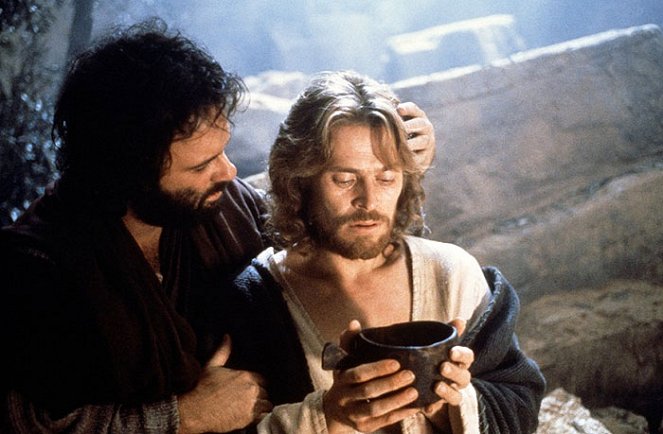
The renaissance of biopics in the 1990s
After the success of many of the narrative biopics of the 1980s, film biographies began to come back into vogue in the following decade, and they continued to be heavily represented at the Oscars each year, although they took in fewer awards compared to the previous decade. A notable exception was Steven Spielberg's acclaimed Schindler's List (1993), which told the story of Oskar Schindler, a German businessman who rescued hundreds of Jews from concentration camps, and won in seven categories. Barry Levinson's crime drama Bugsy (1991), which chronicled the criminal career of 1940s gangster Benjamin Siegel, picked up two golden statuettes from a total of ten nominations, and the same number of awards went to Tim Burton's black-and-white Ed Wood (1994), which was conceived as a tribute to directorial legend Edward Wood Jr., who became known as one of the worst filmmakers of all time thanks to his 1950s-era films. Five Oscars went to Mel Gibson's historical film Braveheart (1995), which was inspired by William Wallace, the commander of the Scottish rebellion in the War of Independence at the turn of the 13th and 14th centuries.
Richard Attenborough's drama Chaplin (1992), which explored the life and filmmaking career of legendary comedic actor and director Charlie Chaplin, was nominated for three Oscars, while his subsequent film Shadowlands (1993), which explored the personality of writer C.S. Lewis, earned two nominations. Spike Lee's Malcolm X (1992), named after the American Islamic cleric and civil rights activist, received the same number of nominations, as did Tom & Viv (1994), which chronicled the relationship between poet T.S. Eliot and his first wife Vivienne, and Hilary and Jackie (1998), a musical drama about cellist Jacqueline Du Pré and her sister Hilary, while the musical Evita (1996), about the wife of Argentine President Juan Perón, took in one of its five Oscar nominations. Seven Oscar nominations went to the Australian film Shine (1996), which told the life story of pianist David Helfgott, while Martin Scorsese's Kundun (1997), which told the life of the Tibetan Dalai Lama, was nominated for four statuettes.
Director Oliver Stone also built on his experience with biopics by focusing on the eponymous band and its frontman Jim Morrison in The Doors (1991), followed by the drama Nixon (1995), which earned four Oscar nominations for its story of the controversial American president Richard Nixon. Miloš Forman enriched the genre of biopics first with The People vs. Larry Flint (1996), whose main character was the publisher of the pornographic magazine Hustler, and then with Man on the Moon (1999), in which he focused on the provocative comedian Andy Kaufman. Steven Soderbergh's Kafka (1991) not only depicted the fate of Prague writer Franz Kafka, but also exploited the surreal aspects of his literary work. The reign of Queen Elizabeth I was depicted in the British historical film Elizabeth (1998), nominated for seven Academy Awards, and its sequel Elizabeth: The Golden Age (2007). In addition, filmmakers also showed interest in personalities such as writer Janet Frame (An Angel at My Table, 1990), composers Jean de Sainte-Colombe (All the Mornings of the World, 1991), Ludwig van Beethoven (Immortal Beloved, 1994), Queen Victoria (Mrs. Brown, 1997), radio host Howard Stern (Private Parts, 1997), singer Selena Quintanilla-Pérez (Selena, 1997), boxer Rubin Carter (The Hurricane, 1999) and writer Susanna Kaysen (Girl, Interrupted, 1999). Other films worth mention include Christopher Columbus: The Discovery (1992), What’s Love Got to Do with It (1993), Queen Margot (1994), Basquiat (1996), Wilde (1997) and Joan of Arc (1999).
The Doors (1991)
Photo © TriStar Pictures
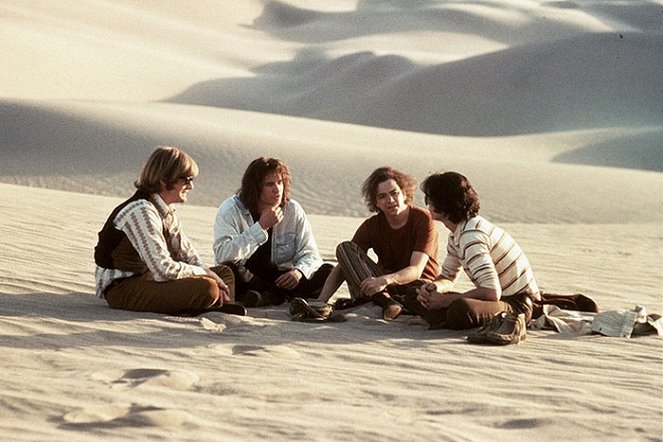
The boom of biopics after 2000
The new millennium brought an enormous increase in the number of biopics, with many of them once again featuring regularly at the Oscars, but unlike their 1990s predecessors, they generally fared better in terms of overall awards. For example, Ron Howard's A Beautiful Mind (2001), inspired by the life of schizophrenic mathematician and Nobel Prize winner John Forbes Nash, won four Oscars, while Martin Scorsese's drama The Aviator (2004), which focused on the life of oddball oil tycoon, filmmaker and aviation pioneer Howard Hughes, turned in five of its eleven Oscar nominations, and other films successfully followed suit. One of five Oscar nominations went to Steven Soderbergh's Erin Brockovich (2000), based on the tribulations of a lawyer and environmental activist and her dispute with a polluting energy company, and two of six nominations went to Frida (2002), based on the life of Mexican painter Frida Kahlo. Roman Polanski's three-Oscar-winning The Pianist (2002) told the story of Jewish musician Wladyslaw Szpilman in Nazi-occupied Poland and the Warsaw ghetto, and the drama The Queen (2006), which focused on the character of Britain's Queen Elizabeth II and her entourage in the period shortly after the tragic death of Princess Diana, took in one of its six Oscar nominations, while Gus Van Sant’s Milk (2008), about the life of Harvey Milk, the first openly gay politician in California’s history, took in two out of eight.
Two Oscars out of six nominations went to Ray (2004), which focused on the musical career of Ray Charles, while the musical drama Walk the Line (2005), which told the story of the life and career of Johnny Cash, received only one statuette out of five nominations. Other music biopic dramas did not wait long, for example, the story of the music group The Supremes inspired the musical Dreamgirls (2006), the career of French chansonnier Edith Piaf was recapitulated in La Vie en rose (2007), Notorious (2009) was about the rise and tragic shooting of rapper Christopher Wallace, aka Biggie Smalls, 8 Mile (2002) was based on the life story of rapper Eminem, and the drama Callas Forever (2002) depicted the fate of opera singer Maria Callas. Ron Howard returned to the biopic genre first with Cinderella Man (2005), a three-Oscar-nominated drama about boxer James J. Braddock, and then with Frost/Nixon (2008), a five-Oscar-nominated conversational drama that revolved around the clash between TV talk show host David Frost and former US President Richard Nixon, and Oliver Stone did the same with the satirical film W. (2008), about US President George W. Bush.
More often than not, the themes of Hollywood biopics veered towards a more modern history and a more intimate treatment, moving away from the model of grand historical spectacles, a trend that partly started after Oliver Stone's Alexander (2004), whose depiction of the victorious campaigns of the King of Macedonia did not meet with a very positive audience response and thus prevented similarly expensive projects from being made for a time. Nevertheless, historical biopics continued to be made in Europe. For example, the Spanish The Borgia (2006) described the family life and tenure of the controversial Pope Alexander VI, the British The Other Boleyn Girl (2008) told the story of sisters Anne and Mary Boleyn, the British-Italian The Duchess (2008) dealt with the fate of Georgiana Cavendish, Duchess of Devonshire, and the German Pope Joan (2009) told the legend of a woman who, in the 9th century, allegedly disguised herself as a man to study theology and made it to the position of Pope. Other historical biopics include Monsieur N. (2003), Marie Antoinette (2006), Mongol: The Rise of Genghis Khan (2007), The Young Victoria (2009), and Mel Gibson's controversial The Passion of the Christ (2004), which focused on the last twelve hours in the life of Jesus Christ.
The Australian film Ned Kelly (2003) was about the famous outlaw of the same name, and the western drama The Assassination of Jesse James by the Coward Robert Ford (2007), which portrayed the conflict between a well-known criminal and a member of his gang, also dealt with a similar theme. The German film Downfall (2004) reconstructed the last days of Adolf Hitler in his Berlin bunker, the anti-heroine of the biographical crime drama Monster (2003) was the infamous mass murderer Aileen Wuornos, and the drama The Assassination of Richard Nixon (2004) told of Samuel Byck, a man who tried to plan the assassination of the American president in 1974. The protagonist of Mesrine Part 1: Killer Instinct (2008) and Mesrine Part 2: Public Enemy #1 (2008) was the infamous French gangster Jacques Mesrine, while Public Enemies (2009) was inspired by the hunt of gangster John Dillinger.
Walter Salles' Argentine co-production The Motorcycle Diaries (2004) was inspired by the student years of Ernesto Guevara, who later became known as the revolutionary Che Guevara, whose guerrilla period was covered by Steven Soderbergh's Che: Part One (2008) and Che: Part Two (2008), which, in addition to the Cuban Revolution, also focused on his campaign in Bolivia. The writer Truman Capote was the subject not only of the five Oscar-nominated Capote (2005), but also of the film Infamous (2006), and the fashion designer Coco Chanel was the subject of two films made in the same year (Coco Before Chanel and Coco Chanel & Igor Stravinsky, both 2009). The drama Kinsey (2004) revolved around the personality and professional activities of psychologist and pioneer in the field of sexology and sociology Alfred Kinsey, while The World's Fastest Indian (2005) told the story of Burt Munro, a New Zealander who set out to break the speed record on a customized motorcycle. The British-Spanish film Little Ashes (2008) dealt with the student years of the painter Salvador Dalí and the poet Federico García Lorca, while the Italian film Il Divo (2008) unravelled the career of the politician Giulio Andreotti.
Pollock (2000), a film about the painter Jackson Pollock, Quills (2000), a historical drama about the controversial nobleman and writer Marquis de Sade, Ali (2001), a sports drama about the story of boxer Muhammad Ali, and Finding Neverland (2004), a film about the story of writer James Barrie, were also up for several Oscars. The many representatives of biopics include films about personalities such as writer Iris Murdoch (Iris, 2001), comic book author Harvey Pekar (American Splendor, 2003), Ugandan President Idi Amin (The Last King of Scotland, 2006), writer Beatrix Potter (Miss Potter, 2006), composer Ludwig van Beethoven (Copying Beethoven, 2006), writer and cartoonist Marjane Satrapi (Persepolis, 2007), musician Bob Dylan (I'm Not There, 2007), Joy Division frontman Ian Curtis (Control, 2007), writer Jane Austen (Becoming Jane, 2007), playwright Molière (Moliere, 2007), painters Rembrandt (Nightwatching, (2007) and El Greco (El Greco, 2007), convict Charles Bronson (Bronson, 2008), American football player Michael Oher (The Blind Side, 2009), model and writer Waris Dirie (Desert Flower, 2009) and singer John Lennon (Nowhere Boy, 2009).
The Aviator (2004)
Photo © 2003 Warner Bros.
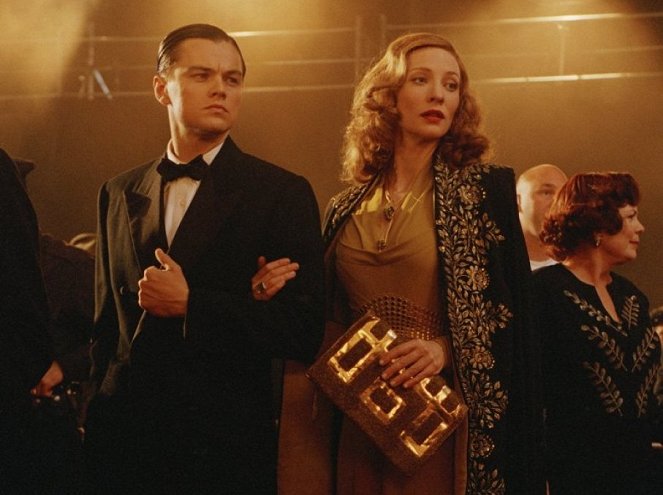
The continuation of the boom in biopics after 2010
The number of biopics that entered distribution and competed for numerous awards did not diminish in this decade, either. For example, Tom Hooper's The King's Speech (2010) won four Oscars out of twelve nominations for the story of the life of King George VI of England, who had to shed his stammer after his unexpected accession to the throne, David Fincher's The Social Network (2010) took in three Oscars out of eight nominations with its portrayal of the life of Mark Zuckerberg at the time of Facebook's founding, while Danny Boyle's Steve Jobs (2015), a drama nominated in two categories, was about the founder of Apple, and Jobs (2013) was also about the same figure. The Iron Lady (2011), focused on the figure of British Prime Minister Margaret Thatcher, received two Academy Awards, and Steven Spielberg's historical drama Lincoln (2012) took in two out of twelve nominations with the story of the American Civil War and the controversy over the abolition of slavery from the perspective of the American president and the political elites of the time. Nominated for eight Oscars, The Imitation Game (2014) described a slice of the life of mathematics professor and cryptanalyst Alan Turing, during which he was instrumental in breaking a famous German encryption machine during World War II. The Theory of Everything (2014), nominated for five Oscars, focused on the personal life and early career of scientist Stephen Hawking, and Foxcatcher (2014), a sports drama about former Olympic champion and wrestling coach Mark Schulz, also competed for the same number of golden statuettes.
Clint Eastwood's American Sniper (2014), inspired by the life of Afghan war veteran Chris Kyle, took in one of six Oscar nominations, and the same director also made films about FBI Director John Edgar Hoover (J. Edgar, 2011), the members of the rock band The Four Seasons (Jersey Boys, 2014), a heroic airplane captain (Sully, 2016), and Olympic security guard Richard Jewell, who saved hundreds of people from a bomb he was later falsely accused of having planted it (Richard Jewell, 2019). Director Pablo Larraín made a pair of biopics in 2016: Neruda, a drama about Chilean poet and senator Pablo Neruda, and Jackie, a film about American First Lady Jackie Kennedy coping with the assassination of her husband. Fernando Meirelles's The Two Popes (2019), which focused on the friendship between the outgoing Pope Benedict XVI and the incoming Pope Francis, earned three Oscar nominations, the protagonist of David Fincher's ten Oscar-nominated drama Mank (2020) was Herman J. Mankiewicz, the screenwriter of Citizen Kane, and in Damien Chazelle's First Man (2018), nominated for four Oscars, it was astronaut Neil Armstrong. The competition for the Oscars included, among others, the biopics Saving Mr. Banks (2013), which described the difficult collaboration of writer P.L. Travers with Walt Disney, The Danish Girl (2015), which told the story of painter Einar Wegener, who was one of the first people to undergo a sex change operation, Vice (2018), which was dedicated to the figure of US Vice President Dick Cheney, and A Beautiful Day in the Neighborhood (2019), which found inspiration in children's show host Fred Rogers.
Two Oscars out of six nominations went to Joe Wright's Darkest Hour (2017), which told the story of Winston Churchill's strategic decisions during World War II, and the same figure in British history was the subject of Churchill (2017). Two films were made in 2016 about US President Barack Obama: the drama Barry and Southside with You, about his first meetings with his future wife Michelle Robinson. The fate of Joan of Arc was the subject of The Silence of Joan (2011), followed by a pair of idiosyncratic films directed by Bruno Dumont Jeannette: The Childhood of Joan of Arc (2017) and Joan of Arc (2019). The story of Florence Foster Jenkins, a singer with a charmingly awful voice, was similarly treated in the French film Marguerite (2015) and the British Florence Foster Jenkins (2016). Racing was the theme of Ron Howard's Rush (2013), which featured Formula One drivers James Hunt and Niki Lauda, and James Mangold's Ford v Ferrari (2019), which featured car racers Ken Miles and Carroll Shelby. Tennis tournaments were a theme shared by Borg McEnroe (2017), dealing with the rivalry between tennis players Björn Borg and John McEnroe, and Battle of the Sexes (2017), in which chauvinist former champion Bobby Riggs and feminist tennis player Billie Jean King faced each other.
Music industry stars who have been the subject of films include James Brown (Get on Up, 2014), rapper group N.W.A. (Straight Outta Compton, 2015), singer Nina Simone (Nina, 2016), singer and actress Judy Garland (Judy, 2019) and Elton John (Rocketman, 2019), among others, while Bohemian Rhapsody (2018), the hugely successful musical drama about Freddie Mercury's tenure with Queen, was a phenomenon and became the highest-grossing biopic of all time. Films such as The Girl King (2015), The Death of Louis XIV (2016), Mary Queen of Scots (2018), and Outlaw King (2018), which depicted the fate of the Scottish king Robert the Bruce, have in turn grappled with the characters of historical rulers. Mary Magdalene (2018) was told from the perspective of the famous follower of Jesus Christ, whose story was also partly depicted in the film, and Capone (2020) also offered a somewhat unconventional view, this time on the figure of Chicago mobster Al Capone, focusing on the last phase of his life, when he struggled with worsening dementia and the consequences of a heart attack and venereal disease.
In addition, themes for biographical films were also found in the lives of other personalities, such as Princess Diana (Diana, 2013), aircraft designer Jiro Horikoshi (The Wind Rises, 2013), porn-star Linda Lovelace (Lovelace, 2013), painter Margaret Keane (Big Eyes, 2014), preacher Martin Luther King (Selma, 2014), Hollywood screenwriter Dalton Trumbo (Trumbo, 2015), cyclist Lance Armstrong (The Program, 2015), oceanographer Jacques Cousteau (The Odyssey, 2016), Olympic skier Michael Edwards (Eddie the Eagle, 2016), figure skater Tonya Harding (I, Tonya, 2017), filmmaker Tommy Wiseau (The Disaster Artist, 2017), actors Laurel and Hardy (Stan & Ollie, 2018), scientist Marie Curie (Radioactive, 2019), writer Shirley Jackson (Shirley, 2020), and inventor Nikola Tesla (Tesla, 2020). Other films worth mention include Renoir (2012), Hitchcock (2012), Grace of Monaco (2014), Pelé: Birth of a Legend (2016), Snowden (2016), Gauguin: Voyage to Tahiti (2017), Loving Pablo (2017), Colette (2018), and Tolkien (2019).
American Sniper (2014)
Photo © Warner Bros. Pictures

Biographical TV series
The biographical genre has never been used as much as other genres in TV series and miniseries, because the lives of various personalities have tended to dominate the TV screen in documentaries, documentary series and some TV films. In many cases, the production of biographical series overlapped with the production of historical series, as evidenced by the Spanish-Italian series The Life of Leonardo Da Vinci (1971), the British miniseries about the reign of Elizabeth I Elizabeth R (1971), the series about the Roman emperor Claudius I, Claudius (1976) or the four-part Italian-British miniseries Jesus of Nazareth (1977), which described the story of Jesus Christ from his birth to his crucifixion. Noteworthy productions of the 1980s include the British miniseries Wagner (1983) and Kennedy (1983), the American series Peter the Great (1986), and the miniseries Christopher Columbus (1985) and Mussolini: The Untold Story (1985).
A significant breakthrough came in the new millennium after the flowering of television productions and the rise of internet TV and audiovisual content providers. The rise of quality TV has resulted in successful series such as John Adams (2008), about America's second president, and The Kennedys (2011), about the fortunes of the notorious American family. The huge increase in series production was subsequently reflected in the proliferation of the biographical genre, with series about the lives of queens being particularly popular. For example, The White Princess (2017) described the reign of Henry VII from the perspective of his wife Elizabeth of York, Victoria (2016-2019) dealt with the personality of Queen Victoria, The Spanish Princess (2019-2020) revolved around the character of Catherine of Aragon, and The Crown (since 2016), which follows the political and personal life of Queen Elizabeth II in the second half of the 20th century, has been extremely popular. Several series have revolved around the Russian Tsarina Catherine the Great, such as the Russian Ekaterina (2014-2019) and Catherine the Great (2015) or the British miniseries Catherine the Great (2019) and the comedy series The Great (2020). The Spanish series Isabel (2012-2014) was about the life of Isabella I of Castile, the series Narcos (2015-2017) was inspired by the Colombian drug baron Pablo Escobar, and Genius (since 2017) focused on creative individuals such as the inventor Albert Einstein, the painter Pablo Picasso and the singer and composer Aretha Franklin, while the poet Emily Dickinson was the subject of Dickinson (from 2019).
Filmmaniak
Best biopics
Schindler's List (1993) |
Untouchable (2011) |
Le Mans '66 (2019) |
Rush (2013) |
Amadeus (1984) |
Butch Cassidy and the Sundance Kid (1969) |
A Beautiful Mind (2001) |
The Pianist (2002) |
Braveheart (1995) |
Papillon (1973) |
| All the best biopics |


